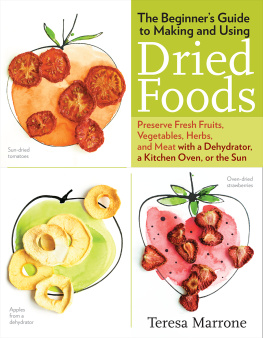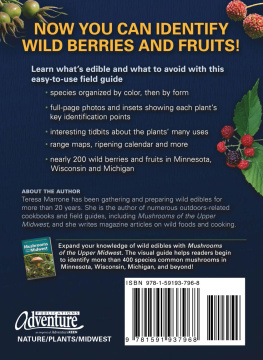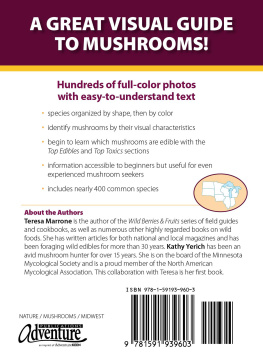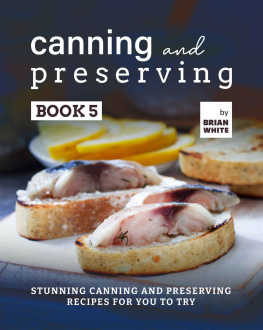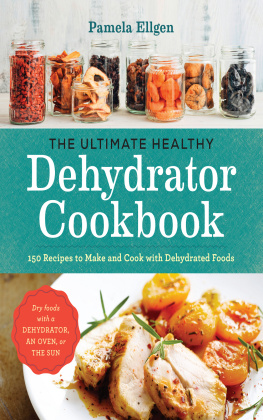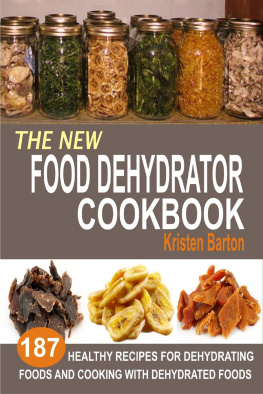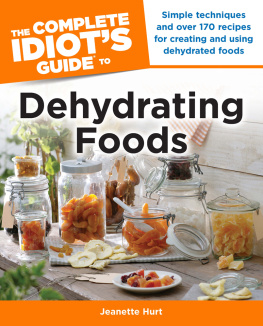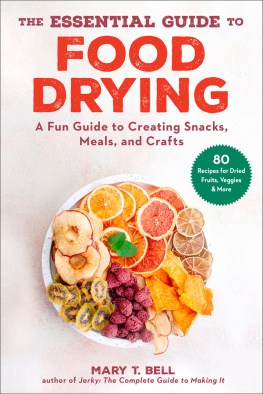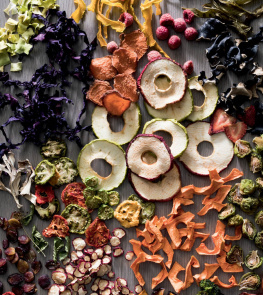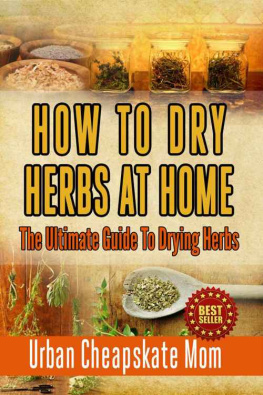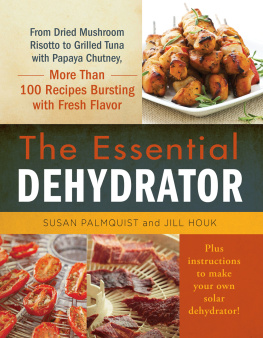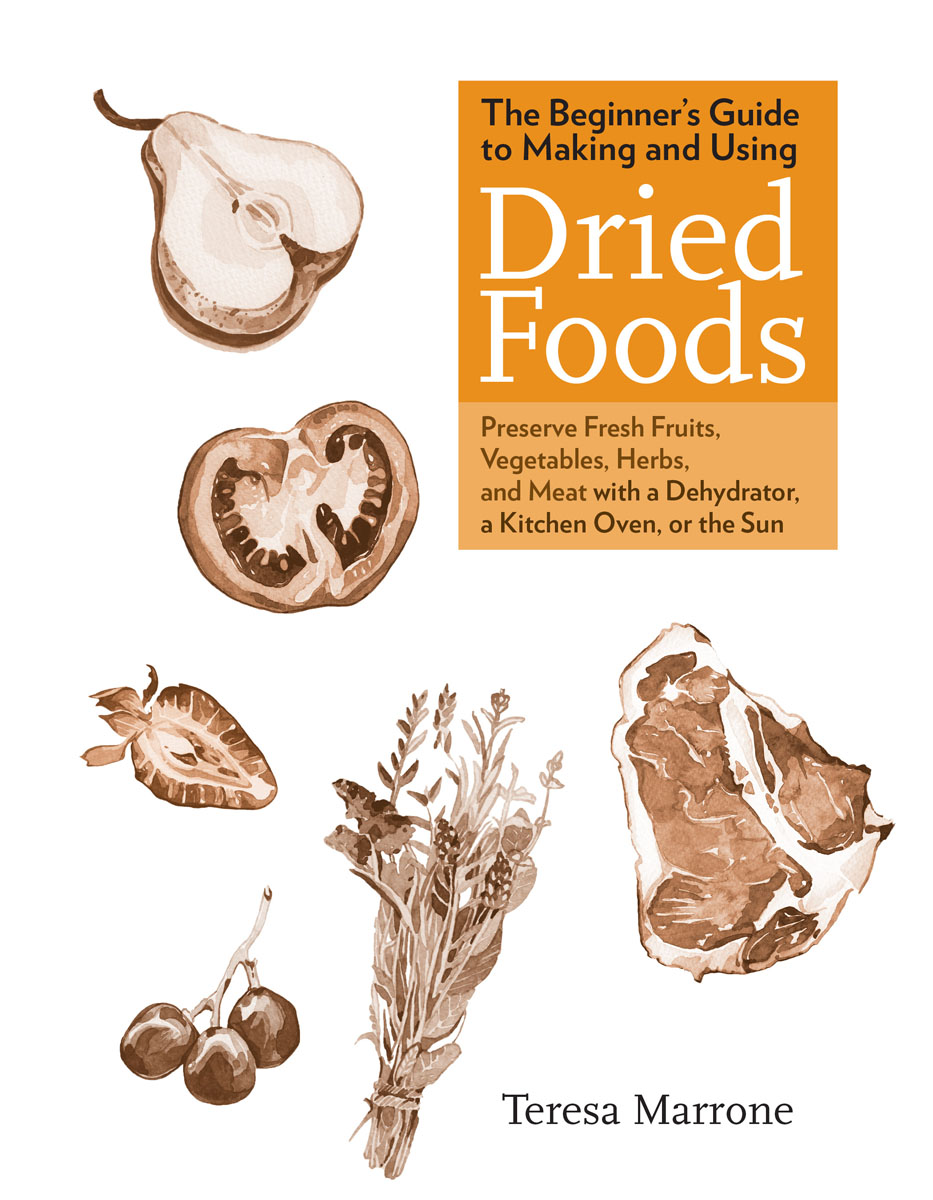Acknowledgments
This book would not have been possible without the inspiration and information from Phyllis Hobsons ground-breaking book Making & Using Dried Foods (originally published way back in 1983 as Garden Way Publishings Guide to Food Drying). Ms. Hobsons work has taught several generations of home cooks how to dehydrate foods, enabling them to preserve the bounty from their gardens and orchards.
Contents
Chapter 1
Drying Foods at Home: An Introduction
Drying foods is a natural alternative to canning and freezing and benefits the family on a tight budget. This time-honored method of food preparation and preservation benefits the hiker, the camper, or the angler looking for a compact food supply light enough to carry in a backpack. It benefits the homemaker looking for delicious, healthful snacks to offer the family, and it benefits vacationers with two homes because drying is a safe way to store food over the winter. Drying is also an ideal way of storing foods for those who live in isolated locations where electricity to operate a freezer may be undependable or nonexistent, and it is a good way to stockpile an emergency food supply in a small storage area.
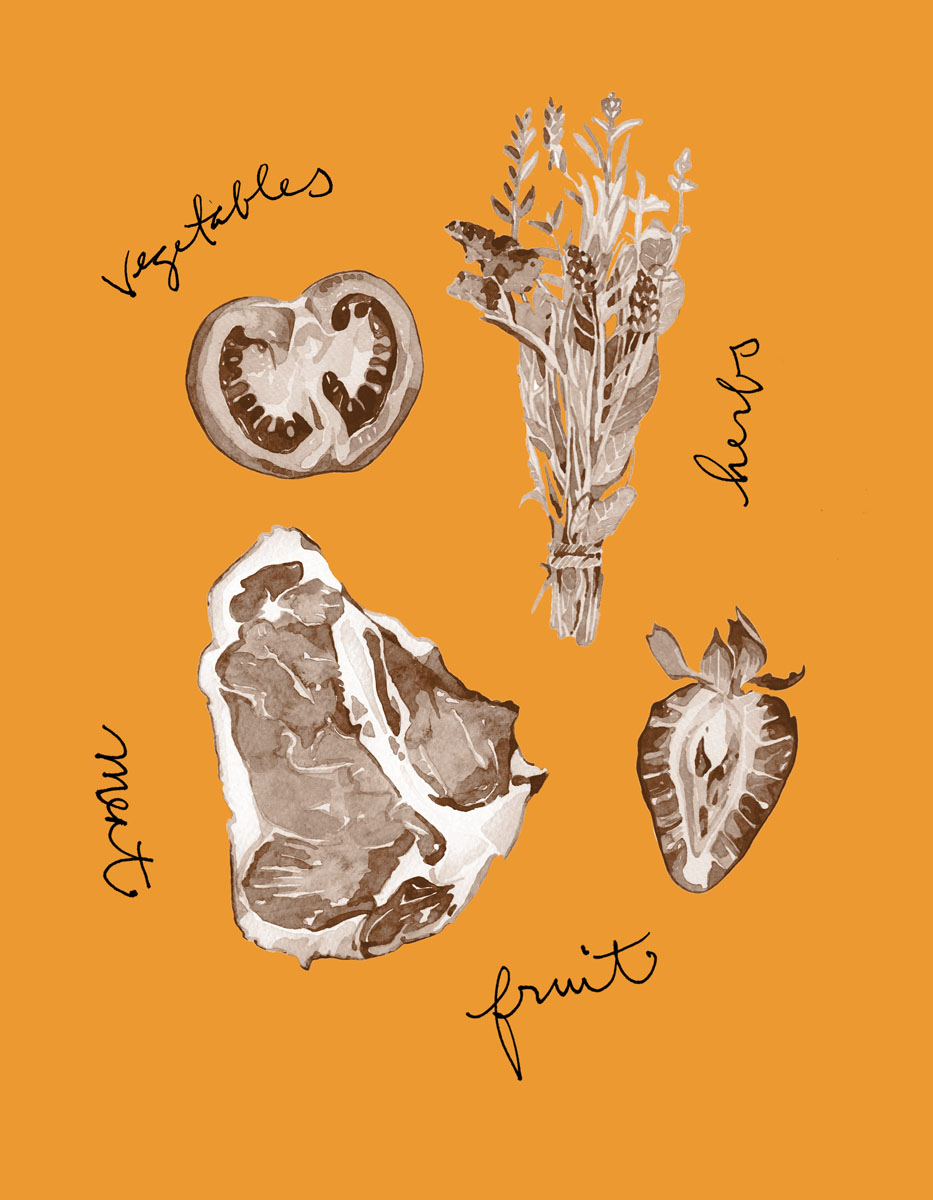
The goal of dehydrating is to remove excess moisture, reducing the water content to between 10 and 20 percent for most foods, so bacteria that cause decay cannot survive. Since dried foods are only one-half to one-twelfth the weight and bulk of the original food, a small, dry, cool closet can provide all the storage space needed for a winters supply of food.
Because drying is a more natural method of preservation than canning and freezing, many people believe drying foods preserves more of the nutritional values present in raw foods, and a USDA study backs up this belief. While it is true that vitamins are lost in blanching, a pretreatment recommended for some vegetables before drying, this nutritional loss can be kept to a minimum if the foods are steam-blanched for no more than the specified time.
Almost any food can be dried by following the instructions in this book, which are aimed at preserving as much of the nutrients and flavor of the food as possible.
Will your dried food be as good as what you can buy on the market? Commercial manufacturers have the advantage of expensive freeze-drying equipment, but you have the advantage of sweet, tree-ripened fruit and just-picked, garden-fresh vegetables. Your own homegrown fruits and vegetables, or those bought at local farmers markets or roadside stands, should be more delicious and nutritious than those the food processors have.
Why Dry Foods at Home?
In addition to the benefits described above, home-dried foods are a great option in many situations. Here are some of the reasons home-dried foods are prepared and used by so many people.
To Save Money
Drying is a safe, easy way to preserve foods. It can also save money when compared to other food preservation methods. You dont have to buy canning jars (or replace them when they break), and even if you do store your dried foods in canning jars, the lids can be washed and reused many times. You can store dried foods also in jars that are not suitable for canning, such as well-cleaned glass jars that originally held peanut butter, mayonnaise, and other prepared foods. Most dried foods can be stored at room temperature, a significant energy saving over frozen storage. And if you live in an area that has plenty of clear, dry, sunny weather, you can dry foods outdoors in the sun, which provides more free energy.
You will save the most money, of course, by drying fruits and vegetables from your own garden. Even if you dont plant a garden, though, you can still economize by drying foods at home. During the harvest season, fruits and vegetables can be purchased cheaply at farmers markets, orchards, and roadside stands. Shares in a CSA (community-supported agriculture) program usually provide a bounty of dawn-fresh, locally grown vegetables and fruits throughout the growing season, at reasonable prices. Produce and meats are surprisingly inexpensive when bought in bulk quantities at co-ops and warehouse clubs. Choose only top-quality fresh produce and meats, and keep an eye on the place of origin if youre concerned about purchasing foods that have been shipped long distances. Watch also for specials on supermarket produce. Bananas flecked with brown, which often sell for half price, make excellent fruit leathers. Often, produce is marked down when a new shipment is due; this bargain-priced produce will work fine for drying as long as it is still wholesome.
Drying can also save you money by avoiding waste. Finely chop leftover cooked meat or vegetables and dry until crumbly; use another time to enrich soups, casseroles, or stews. Spread leftover sauces or thick soups on a solid liner sheet and dry until leathery, then rehydrate later for a quick meal when time is short. Pure excess cooked fruits in the blender, then make delicious homemade leathers as described in .
Specialty grain products such as flax crackers, flavored pasta, and whole-grain cereals are expensive to buy, but you can make your own for far less and control the ingredients as well. Unlike fruits and vegetables, flour, flax seeds, and cornmeal are available all year, so making homemade grain products is a good winter project that will pay handsome rewards later. To get some ideas of the possibilities, see .
To Preserve the Harvest
When your garden is overflowing with tomatoes, the apples are piling up in the orchard, and the neighbors are leaving zucchini on your porch, get out your dehydrator and roll up your sleeves. Even if you plan to can or freeze some of your bounty, youll find that drying offers an additional option that produces some very useful foodstuffs.
Plum tomatoes and other small varieties can be cut in half and dried, then used in place of purchased (and expensive) sun-dried tomatoes; larger tomatoes can be sliced and dried, then used in the same way. Dried apple slices make great lunchbox treats, and your home-dried apples wont be loaded with preservatives like most commercial versions. Zucchini slices, when dried, become a delightful, low-calorie snack, perfect for dipping; they also make a nice salad topper when crumbled. And of course, most of your dried fruits and vegetables can be rehydrated and used like fresh or canned foods.
To Save Space
Fruits and vegetables have very high water contents. Apples, apricots, and blueberries are approximately 85 percent water by weight, ripe tomatoes are almost 95 percent, and even firm, solid vegetables like carrots are over 85 percent. Dehydrating reduces the water dramatically, generally to 10 to 20 percent by weight. As the water is reduced, the food shrinks in size. Three pounds of fresh rhubarb (about 3 quarts of cut-up pieces) weighs just 3 to 4 ounces after drying, and measures about 2 cups (1 pint). The same amount of rhubarb would typically require four or five 1-pint jars if sliced and canned. So your pantry shelf may hold up to four times as much food thats been dried vs. food thats been canned and dried foods take up even less room when vacuum-sealed in plastic storage bags.

